
Douglas is the capital and largest town of the Isle of Man, with a population of 26,677 (2021). It is located at the mouth of the River Douglas, and on a sweeping bay of two miles. The River Douglas forms part of the town's harbour and main commercial port.

The culture of the Isle of Man is influenced by its Celtic and, to a lesser extent, its Norse origins, though its close proximity to the United Kingdom, popularity as a UK tourist destination, and recent mass immigration by British migrant workers has meant that British influence has been dominant since the Revestment period. Recent revival campaigns have attempted to preserve the surviving vestiges of Manx culture after a long period of Anglicisation, and significant interest in the Manx language, history and musical tradition has been the result.

Manx English, or Anglo-Manx, is the historic dialect of English spoken on the Isle of Man, though today in decline. It has many borrowings from Manx, a Goidelic language, and it differs widely from any other variety of English, including dialects from other areas in which Celtic languages are or were spoken, such as Welsh English and Hiberno-English.

Hop-tu-Naa is a Celtic festival celebrated in the Isle of Man on 31 October. It is the celebration of the traditional Celtic festival of Samhain, the start of winter. It is thought to be the oldest unbroken tradition in the Isle of Man.
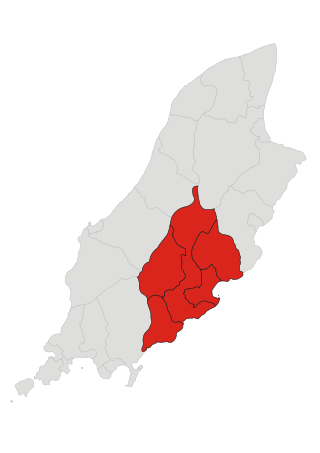
Middle is one of the six sheadings of the Isle of Man.
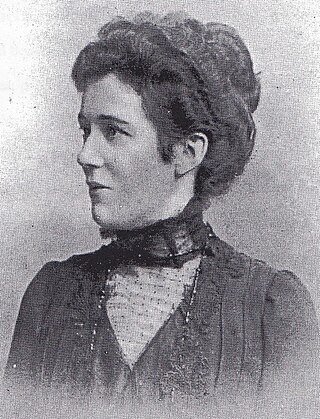
Sophia Morrison was a Manx cultural activist, folklore collector and author. Through her own work and role in encouraging and enthusing others, she is considered to be one of the key figures of the Manx cultural revival. She is best remembered today for writing Manx Fairy Tales, published in 1911, although her greatest influence was as an activist for the revitalisation of Manx culture, particularly through her work with the Manx Language Society and its journal, Mannin, which she edited from 1913 until her death.
Fenodyree in the folklore of the Isle of Man, is a hairy supernatural creature, a sort of sprite or fairy, often carrying out chores to help humans, like the brownies of the larger areas of Scotland and England.
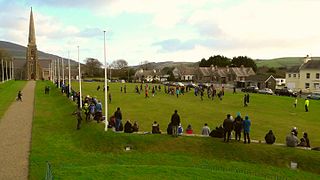
Cammag is a team sport originating on the Isle of Man. It is closely related to the Scottish game of shinty and is similar to the Irish game of hurling. Once the most widespread sport on Man, it ceased to be played around 1900 after the introduction of association football, though it has experienced a revival in the 21st century.

Glashtyn is a legendary creature from Manx folklore.
Mooinjer veggey is the Manx for little people, a term used for fairies in Gaelic lore. The equivalent Irish and Scottish Gaelic are Muintir Bheaga and Muinntir Bheaga.
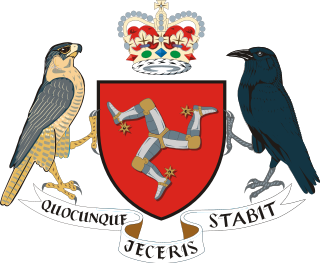
Sir George Frederick Clucas, CBE, JP was a Manx politician and Speaker of the House of Keys from 1919 to 1937.

Philip Moore Callow Kermode, was a Manx antiquarian, historian and naturalist.
John Joseph Kneen was a Manx linguist and scholar renowned for his seminal works on Manx grammar and on the place names and personal names of the Isle of Man. He is also a significant Manx dialect playwright and translator of Manx poetry. He is commonly best known for his translation of the Manx National Anthem into Manx.
John Kelly LL.D. was a Manx scholar, translator and clergyman.

Ballure is a small hamlet about 0.75 mile southeast of Ramsey on the Isle of Man. A stop on the Manx Electric Railway which runs through it is the Ballure Halt station. The latter lies just to the south of the boundary of Ramsey, and thus lies in the ward of Maughold within the current administrative parish of Garff.
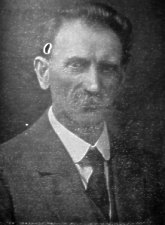
Christopher R. Shimmin (1870–1933), Manx playwright and MHK.
John Moore was a Manx poet and privateer of the late 18th Century. Originally from Camlork, in Braddan, Isle of Man, Moore later settled in Bride, where he owned an inn. It was here that he came to be known as “John the Tiger” due to his often singing the song describing his time as the privateer on board The Tiger.
Mannin: Journal of Matters Past and Present relating to Mann was an academic journal for the promotion of Manx culture, published biannually between 1913 and 1917 by the Manx Society, Yn Cheshaght Ghailckagh. It was edited by Sophia Morrison, with the assistance of William Cubbon.
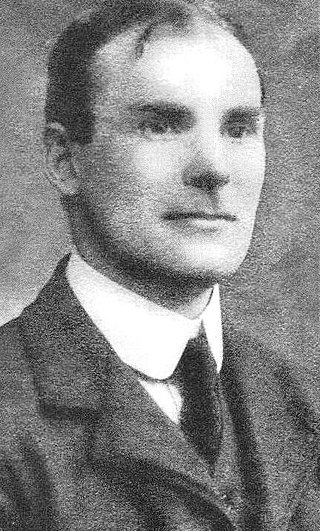
William Walter Gill (1876–1963) was a Manx scholar, folklorist and poet. He is best remembered for his three volumes of A Manx Scrapbook.
Edmund Evans Greaves Goodwin was a Manx language scholar, linguist, and teacher. He is best known for his work First Lessons in Manx that he wrote to accompany the classes he taught in Peel.














